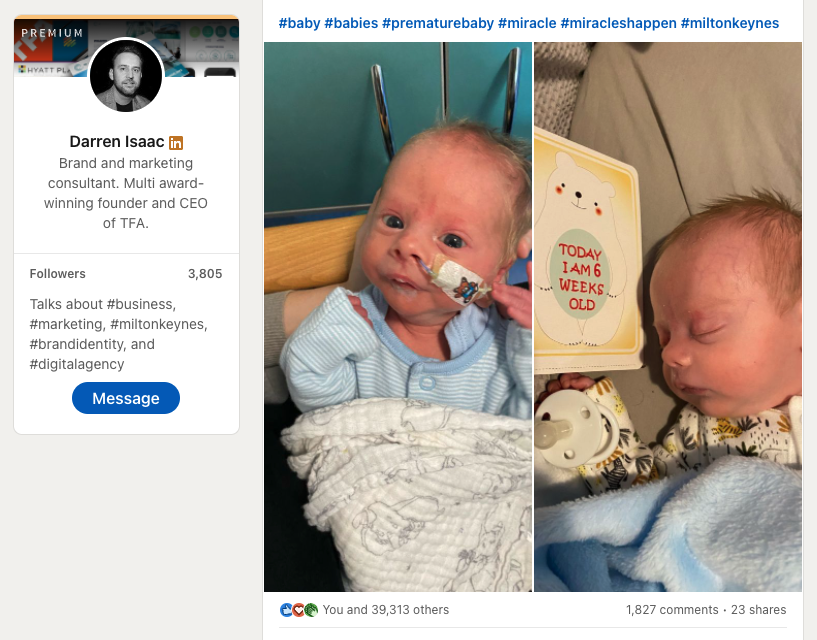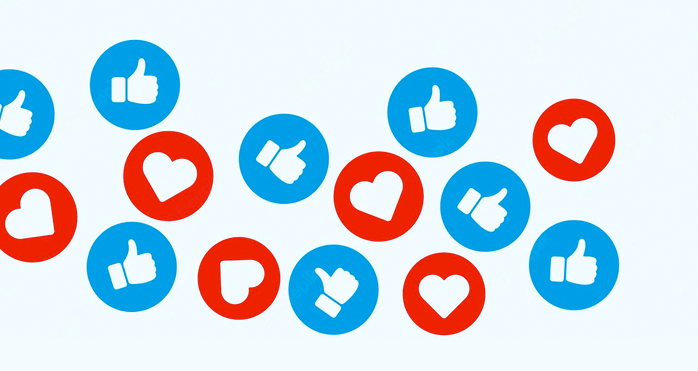Tricks of the trade to go viral on social media
Going viral is the holy grail of marketing. What we mean by “viral” content is that you create something on social media that gets the public’s attention; people then share it to their network, and those people do too. Before you know it, and in the same way bacteria multiply in a dish, hundreds of thousands to millions of people have seen your content, and it hasn’t cost you anything!
Viral content creates success
Many successful businesses and careers have derived through viral content. Looking at your Facebook or Linkedin feed, you may notice the same few people cropping up repeatedly. From modern marketing gurus such as Gary Vaynerchuk, Stephen Bartlett and Neil Patel to internet celebrities like Logan Paul, The Smithy Family and The Bald Builders, they were all catapulted to success by viral content. In today’s connected world, all it takes is for a single, popular piece of content to create notoriety for you or your brand, and the rest can be built from there.
What makes content go viral?
Any old content does not simply go viral – it takes a perfect storm of factors for this to happen. Of these factors, you can control only one, which is the content itself. The rest is down to influence. You need to pitch it the right way, and then what happens next is almost entirely out of your hands, down to the public’s response and the platforms’ algorithms (e.g. Facebook).
Like a fire, you need fuel, a spark, and a catalyst to achieve an inferno of attention. The spark is your content, the fuel is the platform (e.g. Facebook, Linkedin, Instagram, TikTok), and the catalyst is the public response.
How does some (rubbish) content go viral and other (great) content not?
If you are even vaguely familiar with the content on social media, you will have noticed that not everything of brilliance goes viral, and not everything viral is brilliant. Far from it, in fact. The content that gets the most impressions/reach (people seeing it) and interactions is pretty dull.
You will have seen basic quizzes or personal questions that rack up hundreds of thousands of comments, shares and likes or someone’s random cat video – but why is this? Well, it all comes down to engagement. Whatever the platform, they all work fundamentally the same way:
- People create and post content
- People in their immediate network see it
- The more people interact with it, the more other people then see it.
If you have 1,000 followers and post something, most of them will not see it; this varies from platform to platform, but 100% of your followers will never be exposed to 100% of your content. This is intentional. If you create good content that people interact with, more of your immediate network will see it. “Good” does not mean the content is good, just that people seem to respond well to it – whatever it is, it has their interest.
The more your immediate network interacts with your content by liking it, commenting, sharing, tagging their friends or hashtagging groups, the most people you don’t know will see it. Then if they do the same, their connections do, and you end up with exponential growth in exposure through the six degrees of separation.
Above are the fundamentals of how it works; everyone else is doing the work for you, and it works in a similar way to spreading a rumour.
How will you create that spark and get the public behind you?
There are some fairly simple base mechanics to creating content primed to go viral. If we keep in mind that the goal is public interaction, we want to create something that the public wants to interact with, whether they know you or not. We can do that one of two ways:
- Create content that asks them to interact somehow or
- Create content that compels people to express their opinion.
There does not have to be any reward mechanism, and you do not need to give away something for free (though that can be hugely effective). You just need to get a response.
The most effective way to do this is by creating something that is both visual and emotive.
By visual, I mean it should be noticed, be clear and draw people to it.
By emotive, I mean your content should resonate with people in some way emotionally. It can be silly or serious, it can be happy or sad, it can evoke anger, or it can bring laughter. Positive content (eg. good news stories) will consistently outperform negative content (e.g. criticism of bad traits in business), so you are better concentrating on emotions that provide human serotonin or a positive response.
Get creative. Think outside the box.
I shared a personal story about our newborn son on Linkedin, and, at the time of writing on 19th January, it had approached 500,000 views: I hasten to add, that the post was not shared with the intention of self-promotion.

To see how TFA can help you strategise your next piece of marketing genius, get in touch with us today.
